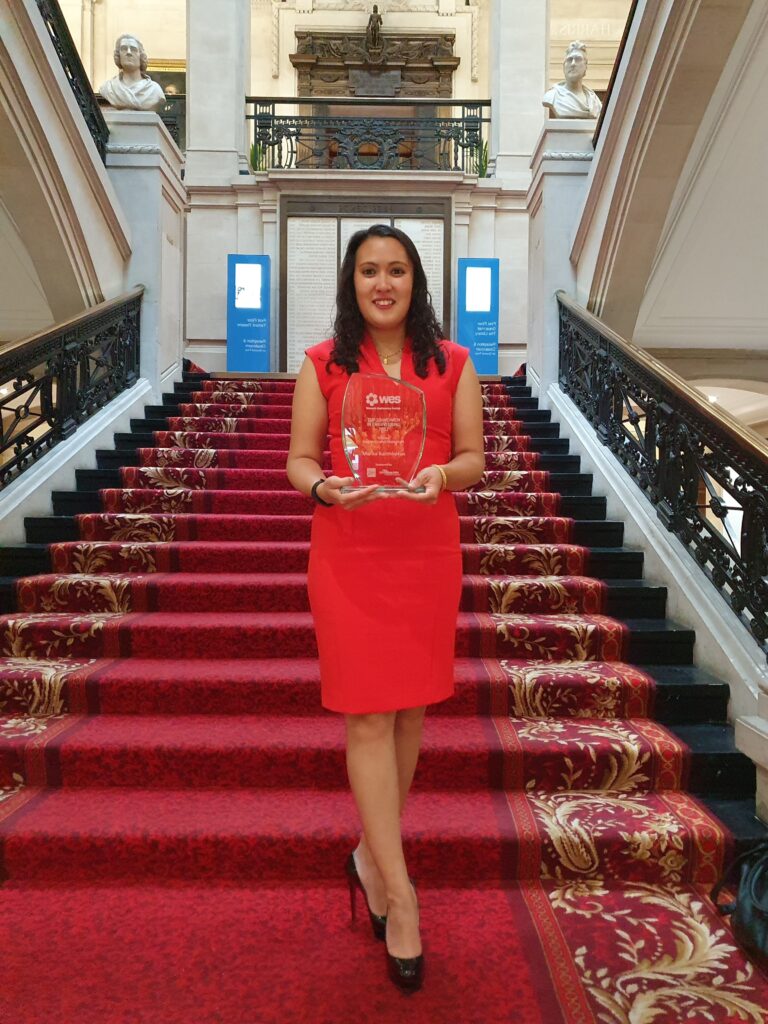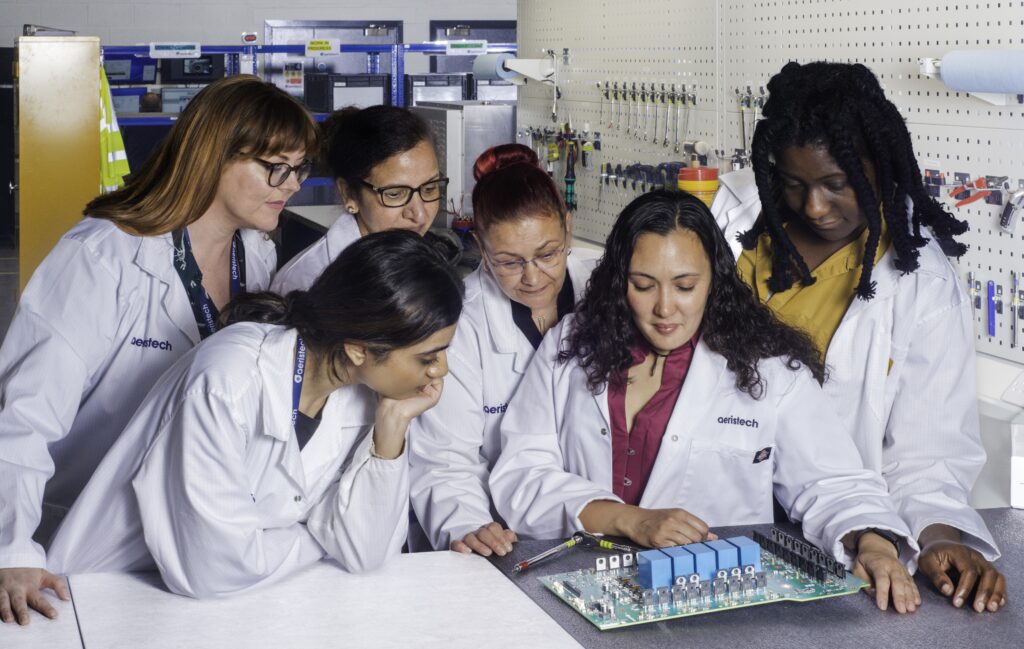Marisa Kurimbokus has recently been named one of the top 50 women in engineering by the Women’s Engineering Society. She studied engineering at Cambridge from 2008 to 2012 and now works as the Mechanical Engineering Team Leader at Aeristech. I sat down with her (and her cat Sari, who joined us briefly) to find out more about her engineering journey.

It is great to meet you – congratulations on your success! Why do you think you were selected as one of the top 50 women in engineering?
I think the work that we’re doing at my company, Aeristech, is quite innovative. It solves a problem that we’ve been having for quite a long time now, which is how to provide constant clean air to hydrogen fuel cells. And this year’s awards were celebrating innovators and inventors and looking at sustainability in particular.
The awards celebrate women’s achievements in engineering– obviously there have been great improvements for women in the last 50 years but the engineering industry still has a long way to go. Have you found it difficult being a woman in engineering?
I think with lots of gender dominated industries, you’ll always find prejudice, whether it’s engineering for women or nursing for men. People do take some convincing, you will get one or two oddballs who will say that women can’t be engineers. But as far as I’m concerned, their prejudices and their stereotypes and so on, that’s their problem. Their problem is not your problem. You just have to keep pushing through.
It must have been amazing finding out that you’d won. How did you react?
You mean aside from dancing around the kitchen? I was absolutely ecstatic and very honoured to be recognised in this way. A lot of my previous roles have been in automotive, and people often think that with cars there’s not a lot left to do, but actually that isn’t true. It’s nice that we were able to be recognised for some of the hard work that we put into making transport much more environmentally friendly.
What does your current role at Aeristech involve?
I am leading the team of mechanical engineers to deliver projects from initial concept. So from the concept and development phase, all the way through to actual production prototypes, and full production as well. We are using maths and physics, taking it into CAD, and taking it into 2d drawings, which somebody can actually make for you, as well as assembling it, testing it, and validating it.

Did you always know you wanted to be a mechanical engineer?
No! I started my degree with the intention of not going into civil engineering and not going into automotive engineering. I was absolutely adamant. And then at the end of first year after having studied it, I did a two week work placements at a civil engineering company because I enjoyed it so much. And then my fourth year, I was really, really enjoying mechanical and that led me to the aerodynamic and automotive side of things.
I have seen that during your time at Cambridge you were involved with CUER (Cambridge University Eco Racing)?
Yes, that’s right. I was fortunate enough to be the aerodynamic team leader for CUER while I was doing my master’s project. My master’s project was looking at redesigning the aerodynamic shell, while still packaging all of the chassis and electronics and solar panels, of course, as well as the driver. So that was a very exciting project, I got to work in wind tunnels. I think one of the things I enjoyed the most was when some of the first years joined me, and sat in on some of the experiments. I got to teach them about what I was trying to achieve, and they were able to help me.
I know it is difficult but if you had to describe your experience at Cambridge in 3 words, what would they be?
Intense – intensely enjoyable and intensely frustrating. Luckily you get the long holidays to soak it all in.
Challenging – it is definitely designed to push you further than you might be comfortable with. It is very humbling to go from being top, or near the top, of your secondary school to being more middling at Cambridge.
The third one, I’m not really sure how to describe it – it is a sort of very Cambridge thing, unique I guess. Like supervisions, which are great preparation for interviews. The degree is very interdisciplinary, and you really learn to pick things up quickly.
What did you do after leaving university?
I started off on the graduate scheme at Jaguar Land Rover, and what attracted me to it was the variety of roles that you could have there. And while I was there, I specialised in systems engineering, which involved defining requirements, bringing new research projects into mainstream engineering and managing that process.
I then moved to Triumph Motorcycles to be a Senior Design Engineer, because I wanted to have more hands on design experience. I then moved to a company called Lyra electronics, which is a power electronics design consultancy. And that was me moving into the world of electronics and high voltages and all these things that I hadn’t seen since uni. And from there I moved to my current job.
I also saw that you were the IMechE Young Volunteer of the Year in 2020?
Yeah! I got my chartership with them, and after that I became a mentor for other people going through their charter ship or incorporated engineer journey. While I was doing that, I also became an interviewer for people going through the chartership process – I really enjoyed talking to people about their careers and their aspirations.
I’ve also been involved with hosting a few events, lectures and factory tours and things like that, for IMechE members. And I’m a STEM ambassador as well – I’ve done a lot of things with schools to try and encourage more children to consider a career in engineering.
Have you got any parting words of advice for readers?
You always have to start somewhere – take all the opportunities you get to try new things. Don’t be afraid to self nominate or put your name forward for things. And remember that during your degree they throw so much at you, you have to stop and look at how far you’ve come.